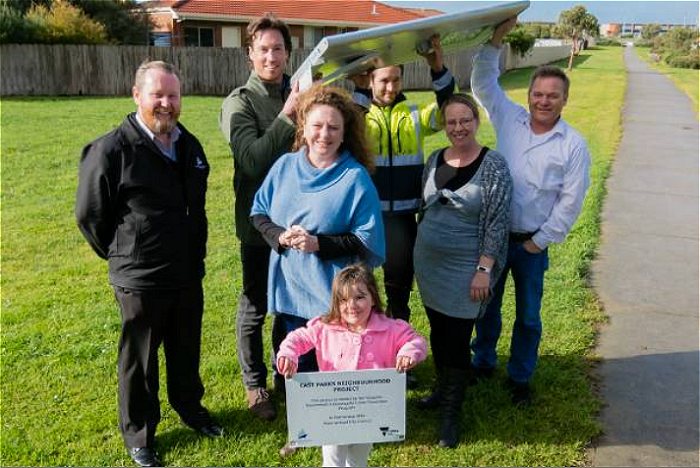
Image source: Warrnambool City Council
More than 60 off-grid solar lights that will enhance community linkages and improve safety are being installed in five parks in the regional Victorian city of Warrnambool.
Each LED light incorporates a solar panel, a lithium-ion battery and a motion sensor. The lights will emit 20 lux when someone is within range, dropping down to 5 lux at other times to save energy.
According to Warrnambool City Council, once fully charged, the lights can function for approximately 30 hours without any sunlight and only require a small amount of sunlight to top up the battery. Being off grid and solar powered, Council will save on installation and ongoing operational costs, and electricity related emissions.
The Council is quite familiar with LED lighting and was the first in Australia to use the technology for a bulk changeover of residential street lights. Around 2,000 lights were replaced, with the project expected to reduce lighting operation and maintenance costs by more than 60 per cent.
The old lights weren’t wasted – Council required the installer to recycle around 98 per cent of the fittings, with the materials used to create products such as glass wool or melted into ingots used in various industries.
Other strategies by Warrnambool City Council to slash its electricity costs and carbon emissions have included the installation of solar panels on Council buildings.
Under its Climate Change Action Plan, Council has an emissions reduction target of 30% by 2020, consistent with the target set by the Victorian Government. Its efforts to date have seen Warrnambool City Council reduce greenhouse gas emissions by more than 15 per cent since 2012.
Council also helped kick along residential solar power in the region – back in 2010, it conducted a solar bulk buy program that helped 145 homes install solar power systems.
The use of solar panels in Warrnambool has only increased in popularity since that time. According to recent Clean Energy Regulator data, 1,286 solar panel systems are installed in the 3280 postcode, with a collective capacity of 4,733 kilowatts. Residents have also installed more than 1,000 solar hot water systems.
Warrnambool is Victoria’s largest coastal city outside Port Phillip Bay and is situated on the south-western coast of the state; approximately 250 kilometres from Melbourne. It’s home to around 34,000 residents (2015) and is a regional hub serving more than 125,000 people in the Great South Coast region.

 RSS - Posts
RSS - Posts



How about off-grid traffic lights?
I am sick of seeing traffic lights flashing yellow – clearly they have an electricity supply but maybe lost the connection to the computer?
Traffic lights should have a backup 4G antenna as a fallback option. So that if the on-site computer gets knocked out, the chip that is flashing the lights yellow should connect to a VicRoads server farm and the server farm tells the chip which light to turn on.